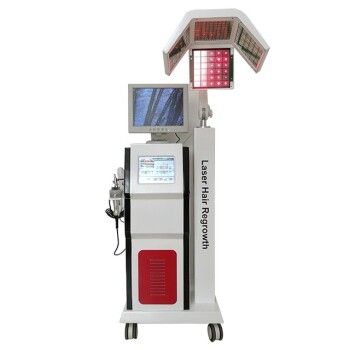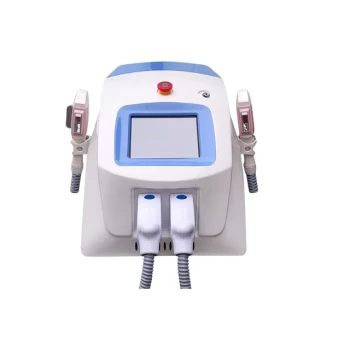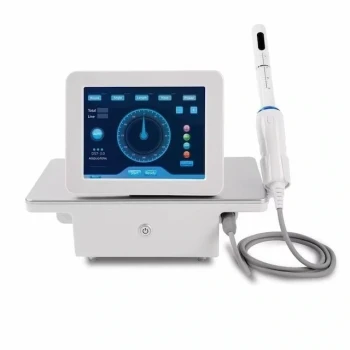In short, proven hair regrowth treatments work by addressing the two core issues of common hair loss. They either block the specific hormone that shrinks hair follicles, as is the case with oral medications like Finasteride, or they stimulate blood flow and nutrient delivery directly to the scalp to "awaken" dormant follicles.
The central principle of modern hair regrowth is not about creating entirely new hair follicles, but about reversing the miniaturization of existing ones. Treatments aim to either remove the hormonal "off switch" or turn the metabolic "on switch" back on for follicles that are still viable.
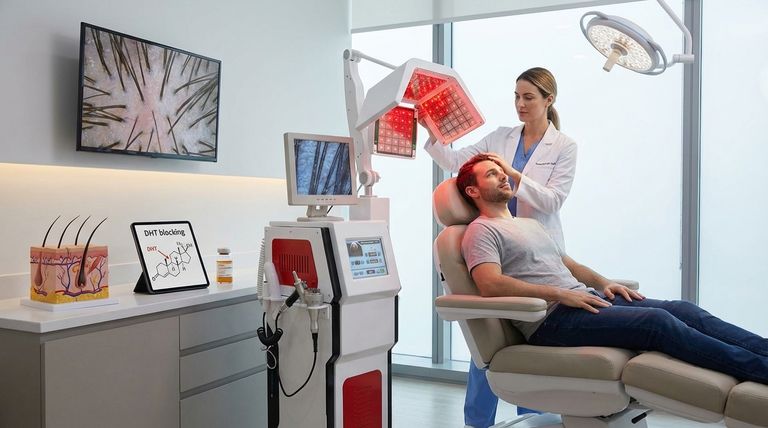
The Root Cause: Understanding Androgenetic Alopecia
To understand the solution, you must first understand the problem. For most men and women, hair loss is caused by a condition called androgenetic alopecia, commonly known as male or female pattern baldness.
The Role of DHT
At the heart of this condition is a hormone called dihydrotestosterone (DHT).
Your body naturally converts a portion of its testosterone into DHT using an enzyme called 5-alpha reductase.
Certain hair follicles, particularly on the top of the scalp, are genetically sensitive to DHT. When DHT attaches to these follicles, it triggers a process called miniaturization, where the follicle progressively shrinks and its growth phase becomes shorter.
Over time, the affected follicles become so small that they can no longer produce a visible hair, leading to thinning and eventual baldness.
The Two Primary Mechanisms of Action
Clinically-proven treatments are designed to interrupt this process through two distinct strategies.
Mechanism 1: Blocking DHT (The Inhibitors)
This approach targets the root hormonal cause of the problem.
The most well-known treatment in this category is Finasteride. As an oral medication, it functions as a 5-alpha reductase inhibitor.
By blocking this enzyme, Finasteride significantly reduces the amount of testosterone that can be converted into the follicle-damaging DHT throughout your body.
With less DHT present, the miniaturization process is slowed or halted. This gives follicles a chance to recover from the hormonal assault, allowing them to return to their normal size and resume a healthy growth cycle.
Mechanism 2: Stimulating Follicles (The Growth Agonists)
This second approach works directly at the scalp level to stimulate follicle activity, independent of hormones.
The primary example here is Minoxidil, a topical solution or foam. It functions as a vasodilator, meaning it widens blood vessels.
When applied to the scalp, Minoxidil increases blood flow to the hair follicles. This surge in circulation delivers more oxygen and vital nutrients directly to the follicle's root.
This stimulation helps to push dormant follicles from their resting (telogen) phase into an active growth (anagen) phase, and it can also help extend the duration of the growth phase for existing hairs.
Understanding the Trade-offs and Realities
While these treatments are effective, it's critical to have realistic expectations about the process.
It Is a Long-Term Commitment
Hair growth is a slow, cyclical process. You will not see results overnight. It typically takes 3 to 6 months of consistent daily use to see the first signs of improvement.
Stopping Treatment Reverses Gains
These medications only work as long as you take them. If you stop using Finasteride or Minoxidil, your body's DHT levels will return to normal or scalp blood flow will decrease, and the hair loss process will resume. Any hair you've maintained or regrown will likely be lost within several months.
Efficacy Varies by Individual
Results depend on your genetics, the extent of your hair loss when you begin treatment, and your consistency. They are most effective for preventing further loss and revitalizing follicles that are miniaturized but not yet completely dead.
A Doctor's Guidance is Essential
Like any medication, these treatments can have potential side effects. It is crucial to consult with a physician or dermatologist to determine if they are right for you and to monitor your progress and health.
Making the Right Choice for Your Goal
Your strategy should be guided by a clear understanding of what each treatment is designed to do.
- If your primary focus is halting the underlying cause of hair loss: A DHT inhibitor like Finasteride is the most direct way to address the hormonal trigger of androgenetic alopecia.
- If your primary focus is stimulating new growth from dormant follicles: A growth agonist like Minoxidil is the primary choice for directly stimulating activity at the scalp level.
- If your primary focus is a comprehensive, aggressive strategy: Many physicians recommend a combination of both Finasteride and Minoxidil to attack the problem from two different angles, which often yields the most robust results.
Ultimately, understanding the science behind hair loss empowers you to work with a medical professional to build an effective, long-term strategy.
Summary Table:
| Treatment Type | Mechanism of Action | Primary Goal | Key Example |
|---|---|---|---|
| DHT Inhibitors | Blocks the hormone that shrinks follicles | Halt/Slow further hair loss | Finasteride (Oral) |
| Growth Agonists | Increases blood flow to the scalp | Stimulate new growth from dormant follicles | Minoxidil (Topical) |
Ready to build a professional, effective hair regrowth strategy for your clients?
BELIS specializes in providing medical aesthetic clinics and premium beauty salons with advanced, professional-grade equipment. Empower your practice with technology that delivers proven results and enhances client satisfaction.
Contact our experts today to discover the right solutions for your business.
Visual Guide
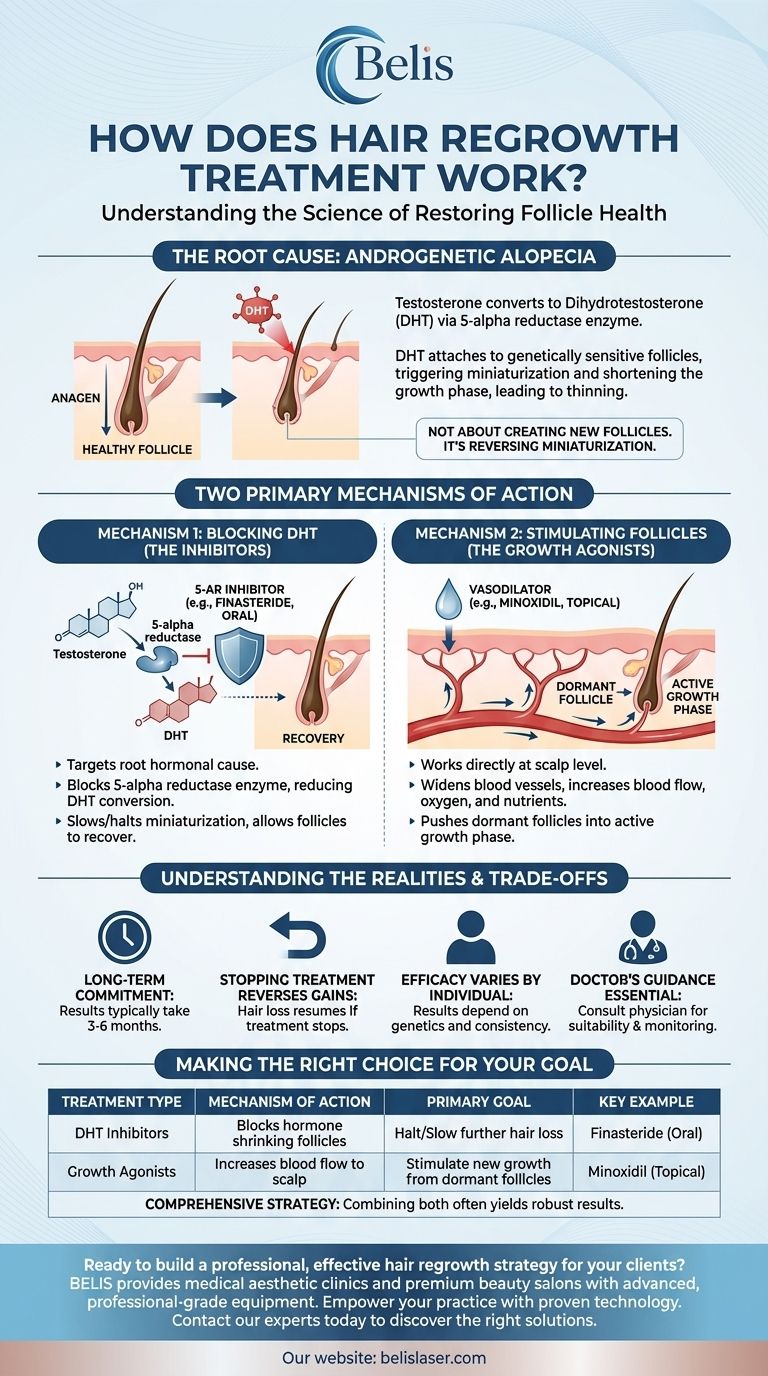
Related Products
- Multifunctional Laser Hair Growth Machine Device for Hair Growth
- Diode Laser SHR Trilaser Hair Removal Machine for Clinic Use
- IPL SHR Hair Removal Machine for Permanent Hair Removal
- IPL SHR+Radio frecuency machine
- Diode Tri Laser Hair Removal Machine for Clinic Use
People Also Ask
- What does the SHR do? The Gentle, Pain-Free Revolution in Laser Hair Removal
- How often should you do laser hair regrowth? A Guide to the Two-Phase Treatment Schedule
- Does IPL have risks? How to Ensure a Safe and Effective Treatment
- How effective is LLLT for hair? Clinically Proven to Boost Hair Growth by 35%
- Do laser caps really regrow hair? A Science-Backed Guide to Effective Hair Regrowth
